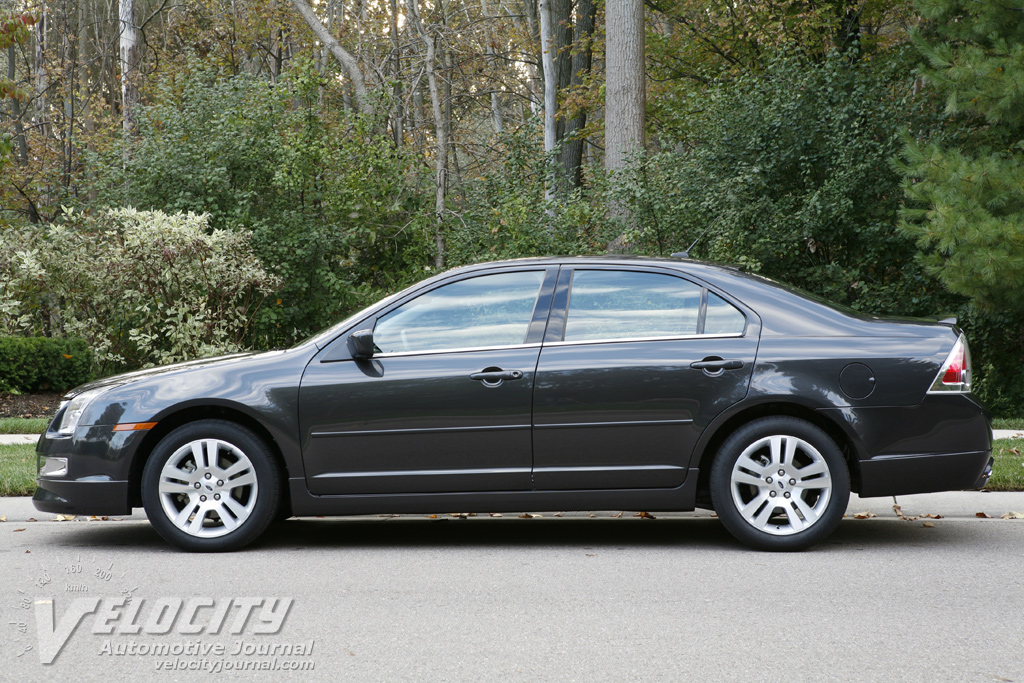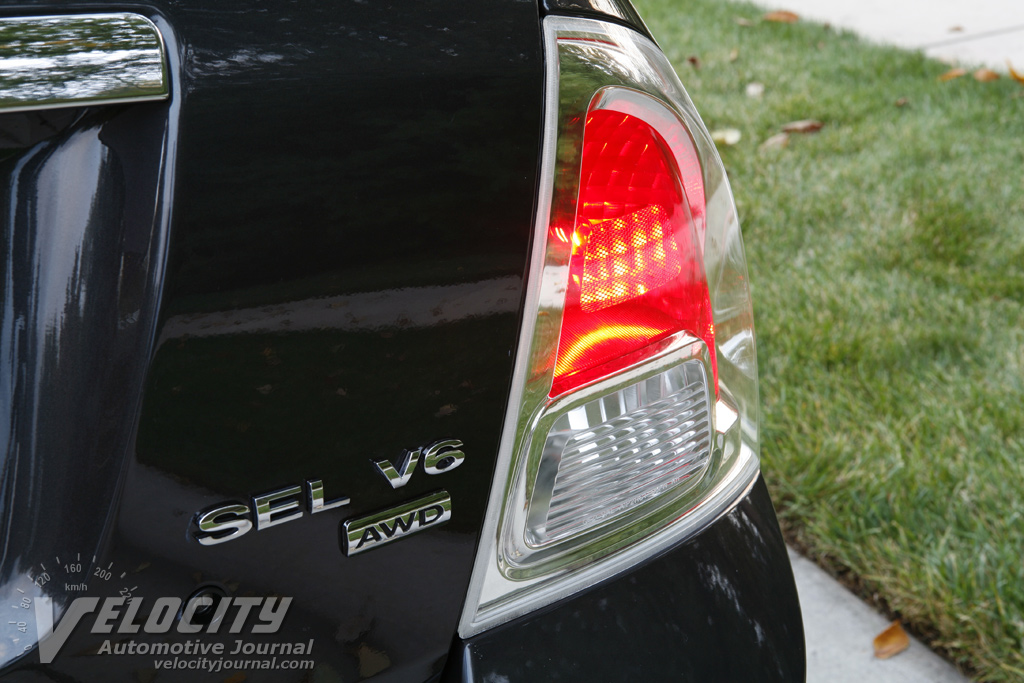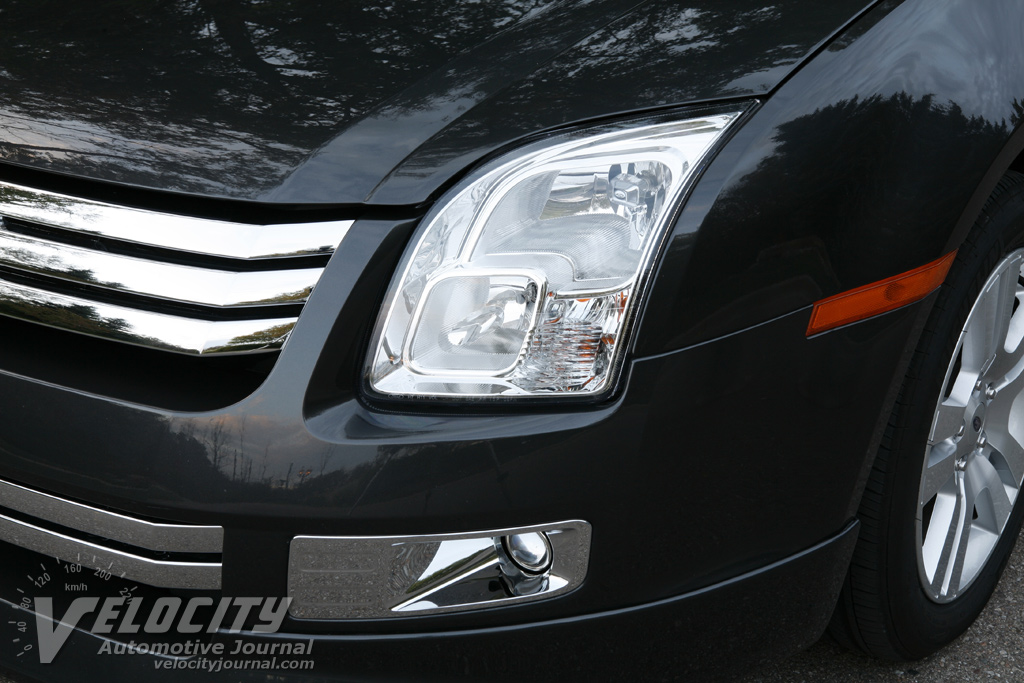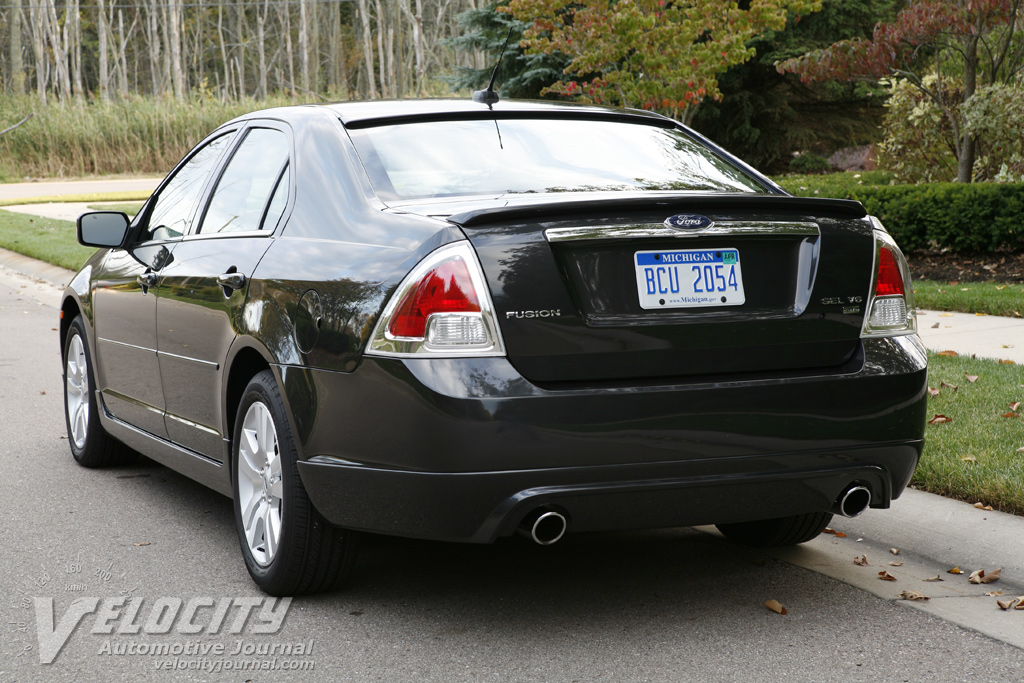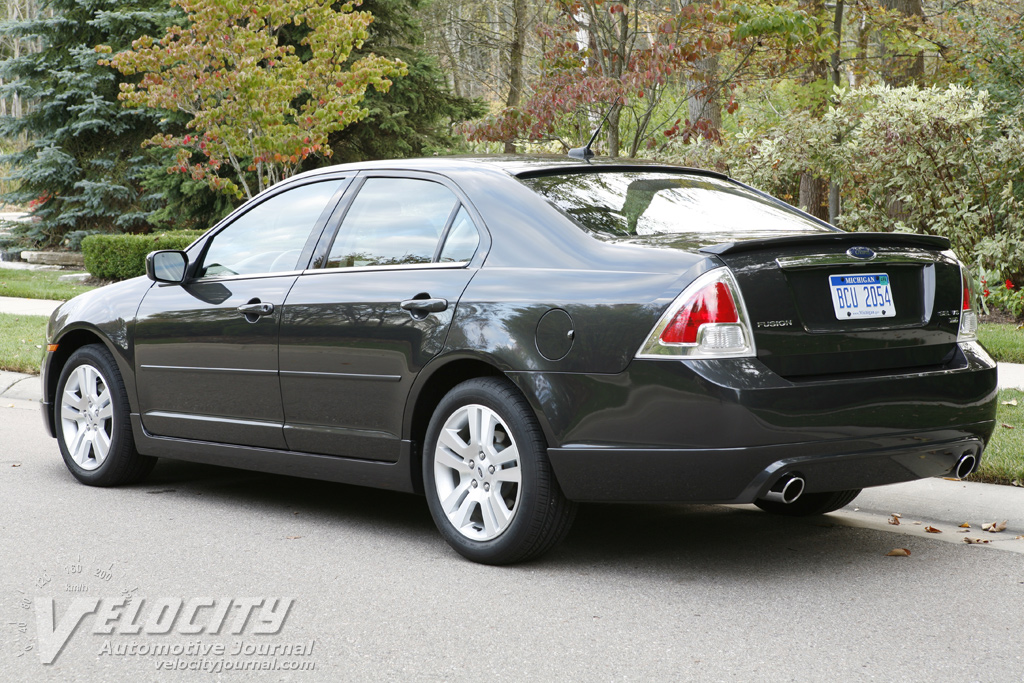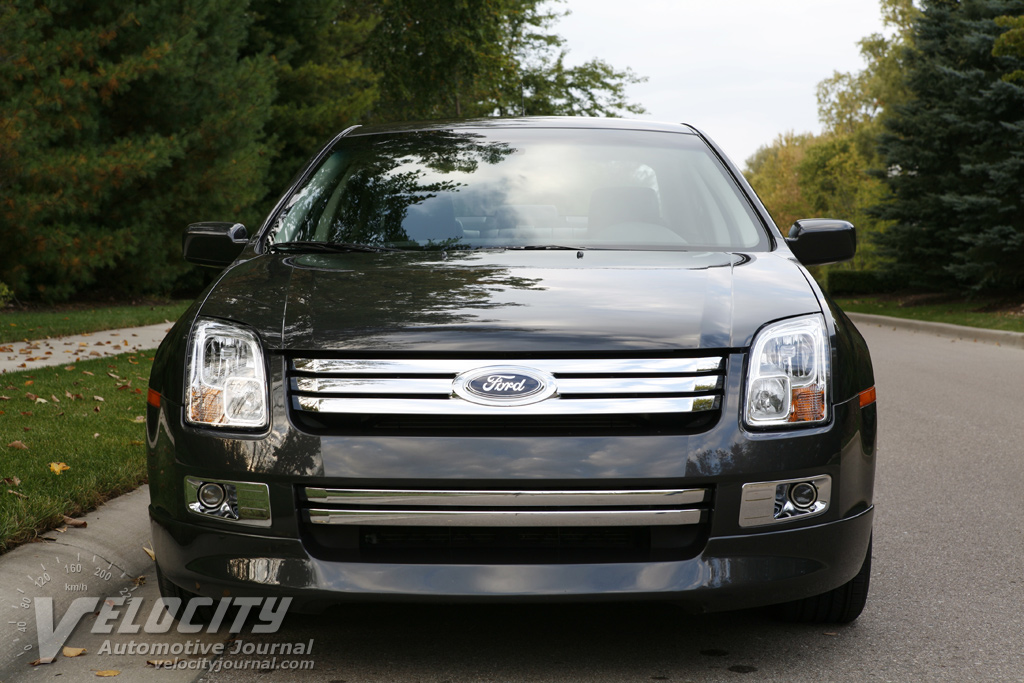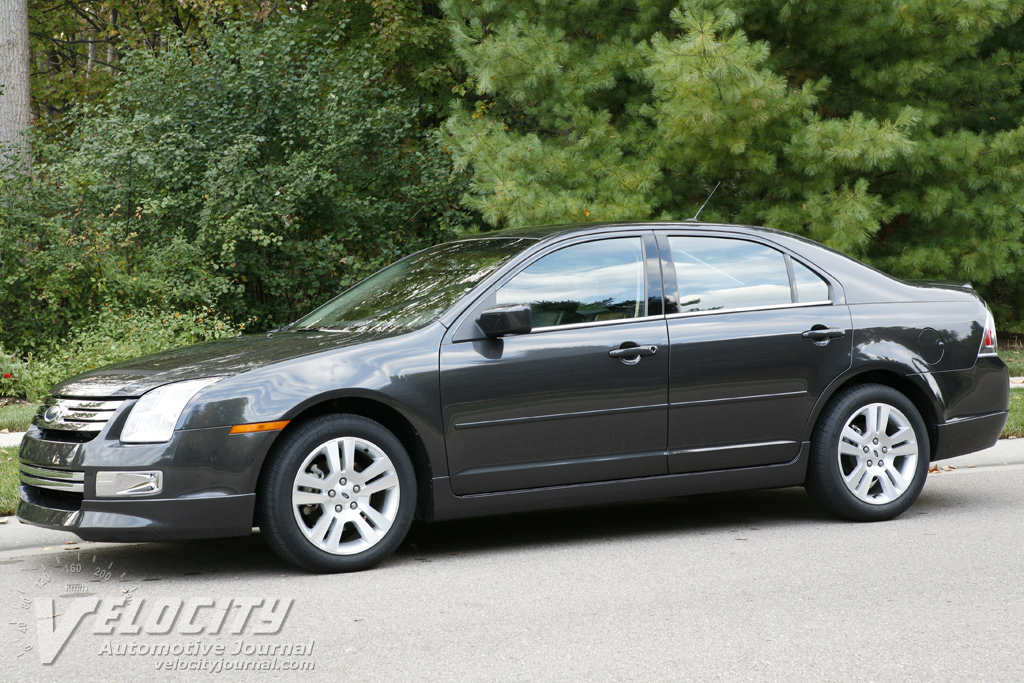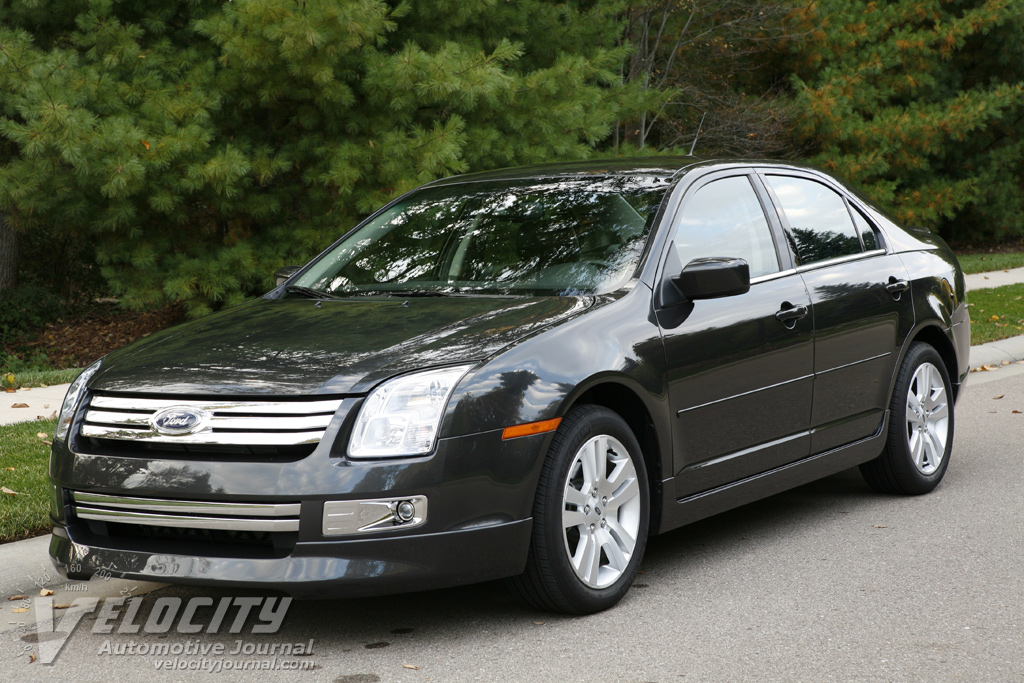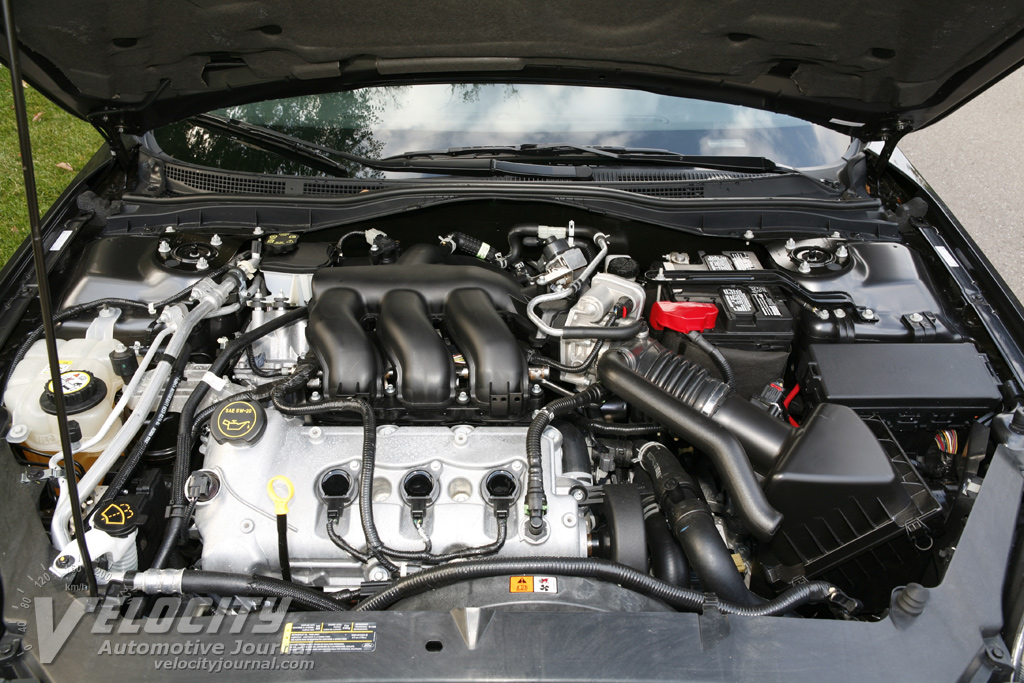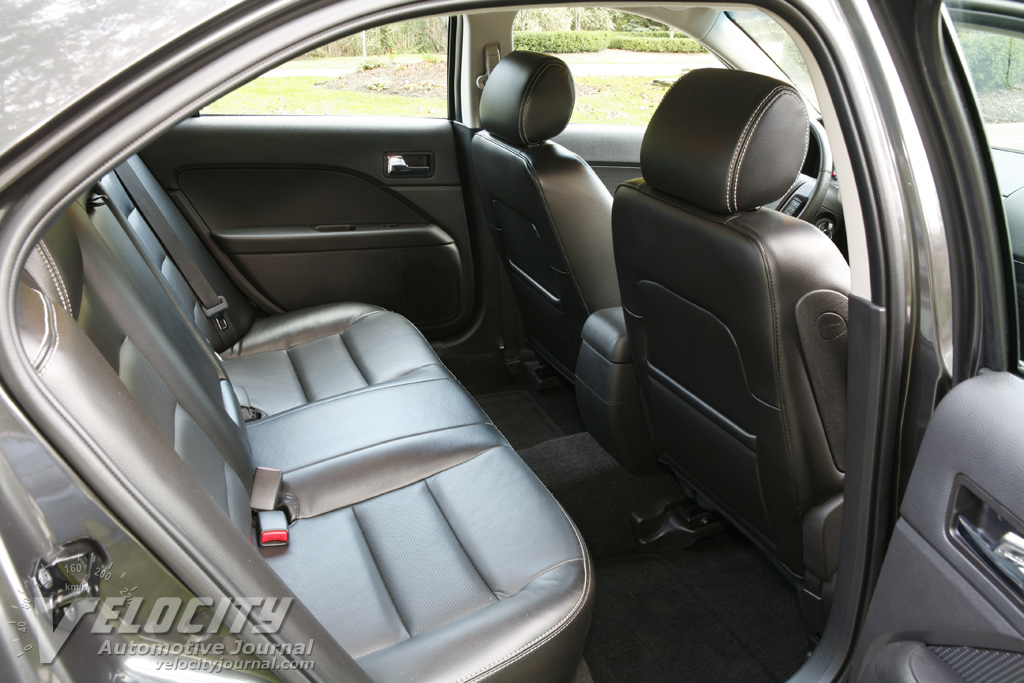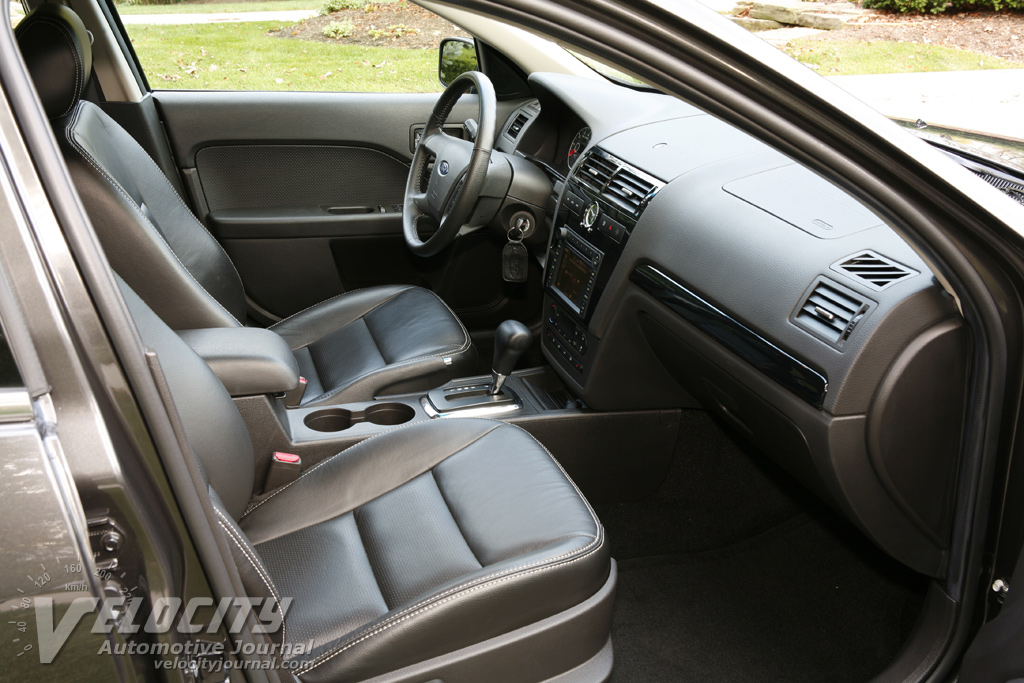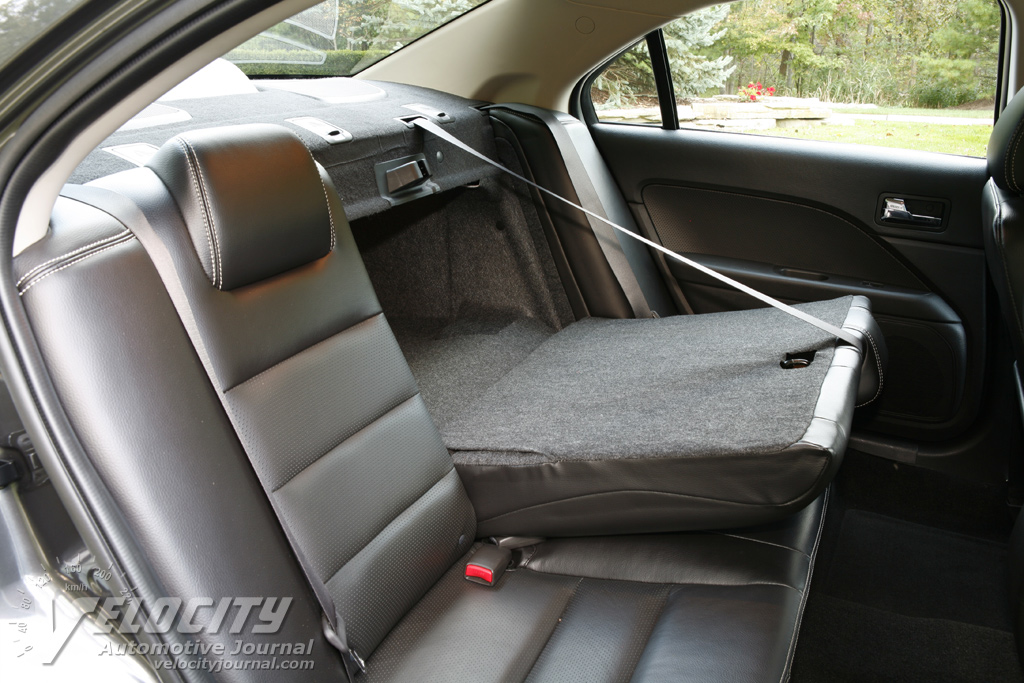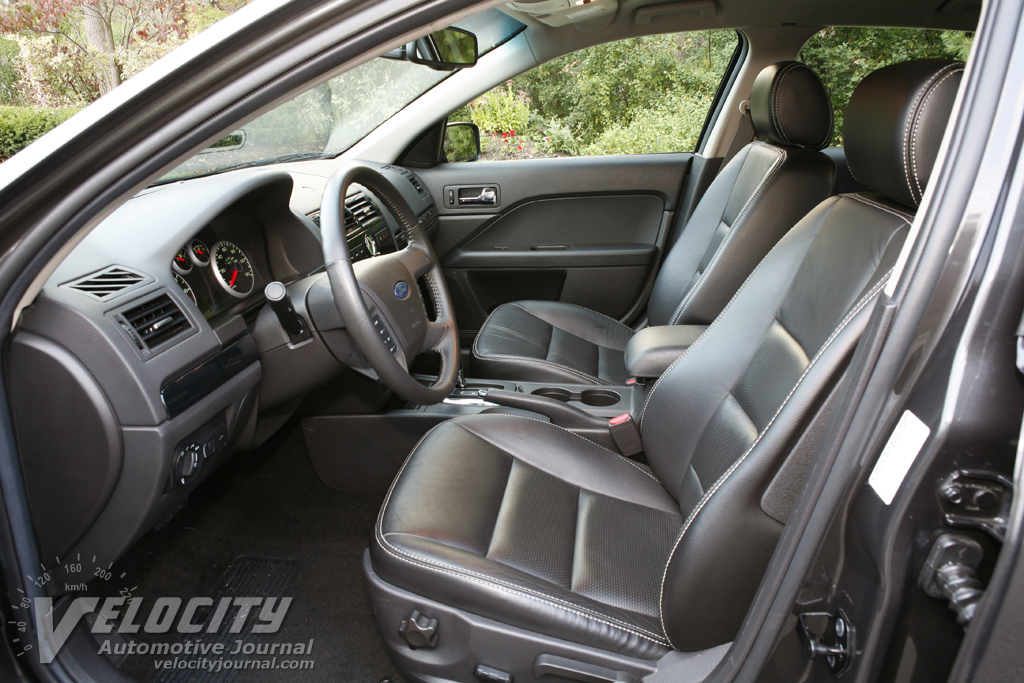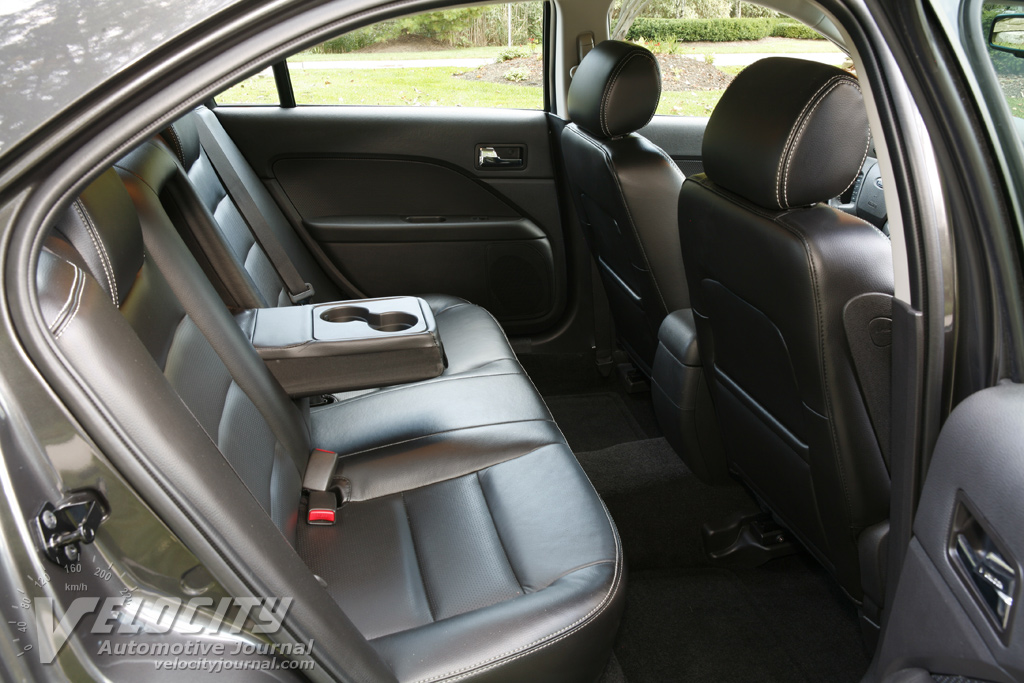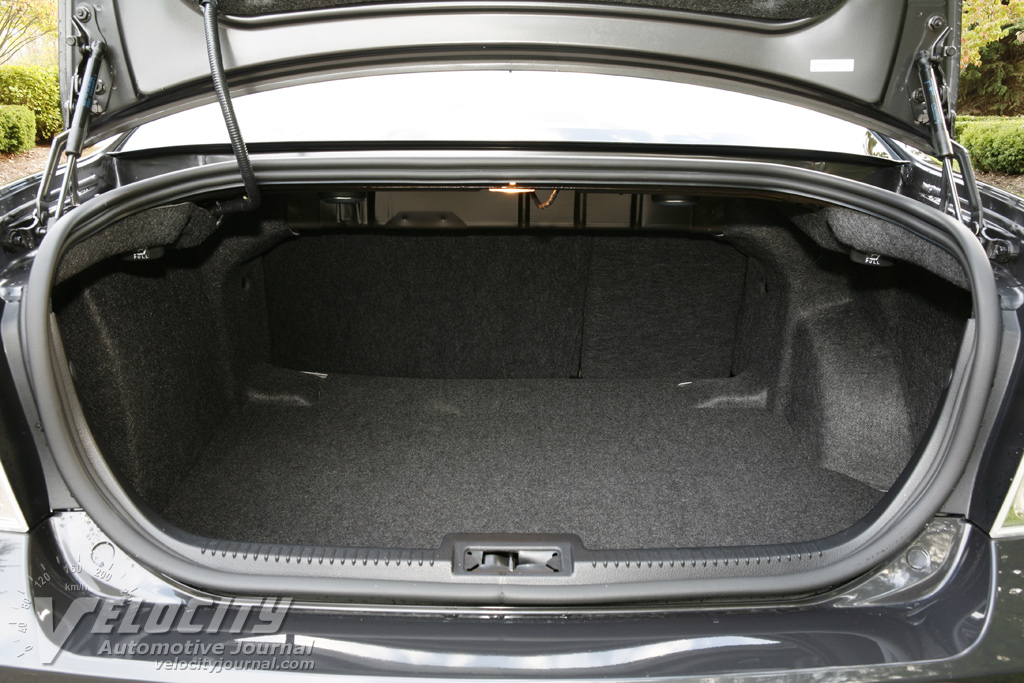2007 Ford Fusion SEL AWD
10/01/2007
Shahed Hussain
Ford introduced the Fusion as a serious attempt to make inroads in Accord and Altima territory. Based loosely on the acclaimed Mazda6 platform, the Fusion offers midsize sedan buyers a fully competitive alternative to the Japanese entries that dominate this segment. The Fusion SEL AWD is priced similarly to the more powerful V-6 Accord EX, Toyota Camry LE, and Altima SE, although none of the Japanese trio is available with AWD. The Fusion actually matches up with the slightly more expensive Subaru Legacy 2.5 GT, or the closely related Mercury Milan.
Ford equips the Fusion with a 2.3L inline-4 or an optional 3.0L V-6. Transmission choices include a 5-speed manual (2.3L only) or a 6-speed automatic (V-6 or I-4). Fusion AWD models (SE and SEL) are available only with the V-6 and automatic combination. Our 2007 Fusion SEL AWD test vehicle ($23,825 base price) was equipped with heated front seats ($295), ABS ($595), Sirius satellite radio ($195), leather seating ($895), audiophile sound system ($420), and navigation system ($1,895). The grand total including $700 destination/delivery charge was $28,820. Note that a 2008 Fusion SEL AWD starts at $24,000, with a slightly different option package mix.
If we were ordering a 2008 Fusion SEL AWD, we would skip the expensive navigation system (substituting a less expensive portable GPS) and the satellite radio. We would add the $795 Moon and Tune package (moonroof & audiophile sound system), but keep the remaining options. The total MSRP would be a reasonable $26,710 for an AWD sedan that is comparably priced with its FWD competition.
Our dark gray metallic test vehicle had an understated charcoal leather interior. We were relieved that Ford skipped the temptation to use simulated wood anywhere; instead polished metal adorns the transmission shift lever bezel, and the center-mounted analog clock. Most interior plastics are of the soft-touch variety, increasingly rare in the midsize sedan segment. The Fusion's trim fits and general interior build quality are similar to other Japanese sedans. The leather-wrapped steering wheel feels substantial; cruise control, HVAC, and audio system buttons nestle between the spokes. Simple, uncluttered circular gauges for the speedometer, tachometer, fuel, and coolant temperature are illuminated in pale green backlighting. Dual cupholders sit behind the transmission shift lever on the center console. A small covered bin on the dash will hold sunglasses or a mobile phone. Below the center console armrest are additional storage bins; the deeper bin will store compact discs, and includes an auxiliary input, audio cable, as well as a 12V outlet.
The optional navigation system includes a rectangular LCD touch screen that also controls the audio system; additional buttons surrounding the LCD provide direct control of some frequently used functions. The navigation system relies on the touch screen for most settings, which proved to be overly distracting to use while driving. Despite the upgraded 8-speaker audio system, overall sound quality was unimpressive, with muddy bass at higher volumes. From a usability standpoint, we prefer the conventional audio system interface, which avoids the unnecessarily complex LCD touchscreen.
With its perforated leather upholstery and comfortable bolsters, the Fusion's seats will accommodate most physiques, with decent lateral support. The 6-way adjustable driver's seat has power fore/aft controls, but rake and lumbar support are via a manual lever and knob, respectively; the front passenger only has manual 4-way seat controls. Since our test vehicle had no moonroof, headroom was plentiful in front and rear for passengers up to 6-ft. tall. The rear seat cushions are generously sized, while the footwell offers ample legroom if the front passengers cooperate. The 60/40 split folding rear seats allow extra cargo hauling flexibility, while the center armrest folds out to reveal two cupholders.
All AWD Fusions are equipped with the 3.0L Duratec V-6, a capable powerplant shared with many other Ford vehicles. With 221-bhp @ 6,250 RPM and 205 lb.-ft. @ 4,800 RPM, this DOHC V-6 is tuned for midrange and high RPM power. Throttle response below 2,000 RPM is underwhelming, but the short-stroke V-6 becomes livelier as the tachometer needle sweeps towards redline. Cruising below 3,000 RPM, the engine note is unobtrusive, but becomes noticeably thrashy from 4,000 RPM to its 6,550 redline.
The standard 6-speed automatic has closely spaced ratios for the first four gears, while 5th and 6th gears are for maximum fuel economy: at 80 MPH, the V-6 is spinning at a relaxed 2,500 RPM in 6th gear. As in many other Ford vehicles, the 6-speed automatic has minimal manual control options. The first two ratios are accessible via the "L" detent on the shifter; the remaining four ratios cannot be selected manually. This is a surprising omission since the Fusion's major competitors have automatics with a full manual mode. Fortunately, the 6-speed automatic kicks down swiftly when required; overall shift quality is exceptionally smooth, even at full throttle. Even so, the V-6 Fusion would benefit from a 5-speed manual (available on the similar Mazda6), although we suspect that only a few customers would actually choose the manual transmission.
With its extra weight and driveline drag, the AWD Fusion gives up a few MPG vs. its front-wheel drive siblings. We averaged 20 MPG in city driving; highway mileage was 24 MPG at 80 MPH. According to the EPA, the 2007 Fusion SEL AWD is rated 19/26 MPG city/highway, compared to 20/28 MPG city/highway for a FWD V-6 Fusion. The slight fuel consumption penalty may dissuade most customers, but we suspect that more discerning buyers who appreciate the advantages of AWD will not be deterred.
Ford has gone to great lengths to advertise the Fusion's sport sedan aspirations, and for the most part the Fusion lives up to its reputation. While most midsize sedans use MacPherson struts for the front suspension, Ford substitutes a more sophisticated short/long arm setup, paired with a multilink rear suspension. Front and rear stabilizer bars are standard on all Fusions, but V-6 models get a slightly larger diameter rear bar.
The solid chassis allowed Ford engineers to tune the suspension for flat cornering, without detracting from a controlled, yet compliant ride; dive and squat are minimal in normal driving. The suspension absorbs severe road impacts without losing its composure; at 90 MPH on rippled freeway surfaces, the Fusion remains stable and composed. The AWD system ensures that torque steer is nearly nonexistent: only a slight twinge is felt through the steering wheel during full throttle acceleration from a standstill. We found no evidence of torque steer in any other normal driving conditions, as the AWD system seamlessly transfers torque to the rear wheels as required. Drivers accustomed to squirming front wheels will be relieved to find that the Fusion simply goes where pointed. The steering is exceptionally communicative, transmitting road textures to the driver's fingertips. Although understeer is relatively mild, the 61/39 front/rear weight distribution conspires to prevent the Fusion from feeling as lively as a RWD sedan. Nonetheless, for a mainstream affordable sedan, the Fusion's handling is difficult to fault.
All Fusions are equipped with 4-wheel discs (11.77"/10.98" diameter F/R) with standard EBD (electronic brake force distribution) and optional ABS. Pedal feel is rock solid, with no dead spots or sponginess. Standard 17-inch alloy wheels are shod with P225/50VR17 Michelin Pilot HX MXM all-season tires. At 80 MPH, the Michelins are unobtrusive, with minimal tire noise. Overall dry weather grip is unexceptional, but traction on rain soaked roads is impressive, aided by the Fusion's all-wheel drive. Summer performance tires would undoubtedly improve handling, but owners in colder climates would need a separate set of winter tires for snow and ice.
Ford deserves credit for introducing the thoroughly contemporary Fusion as its alternative to the Honda Accord and Nissan Altima. While the Fusion matches its foreign competition in driving enjoyment, the available AWD sets it apart as arguably the best handling sedan in its class. We do think that a proper sports sedan deserves full manual shifting capability, whether via a Tiptronic-style shift gate or a conventional manual transmission. The Fusion's 3.0L V-6 also suffers a power and torque deficit compared to the 3.5L powerplants in its Japanese rivals. Although Ford could transplant the 3.5L V-6 from the Lincoln MKZ into the Fusion, this would cause additional overlap between these closely related models. Ultimately, the Fusion should appeal to customers looking for the traction benefits of AWD in an affordable midsize sedan.

